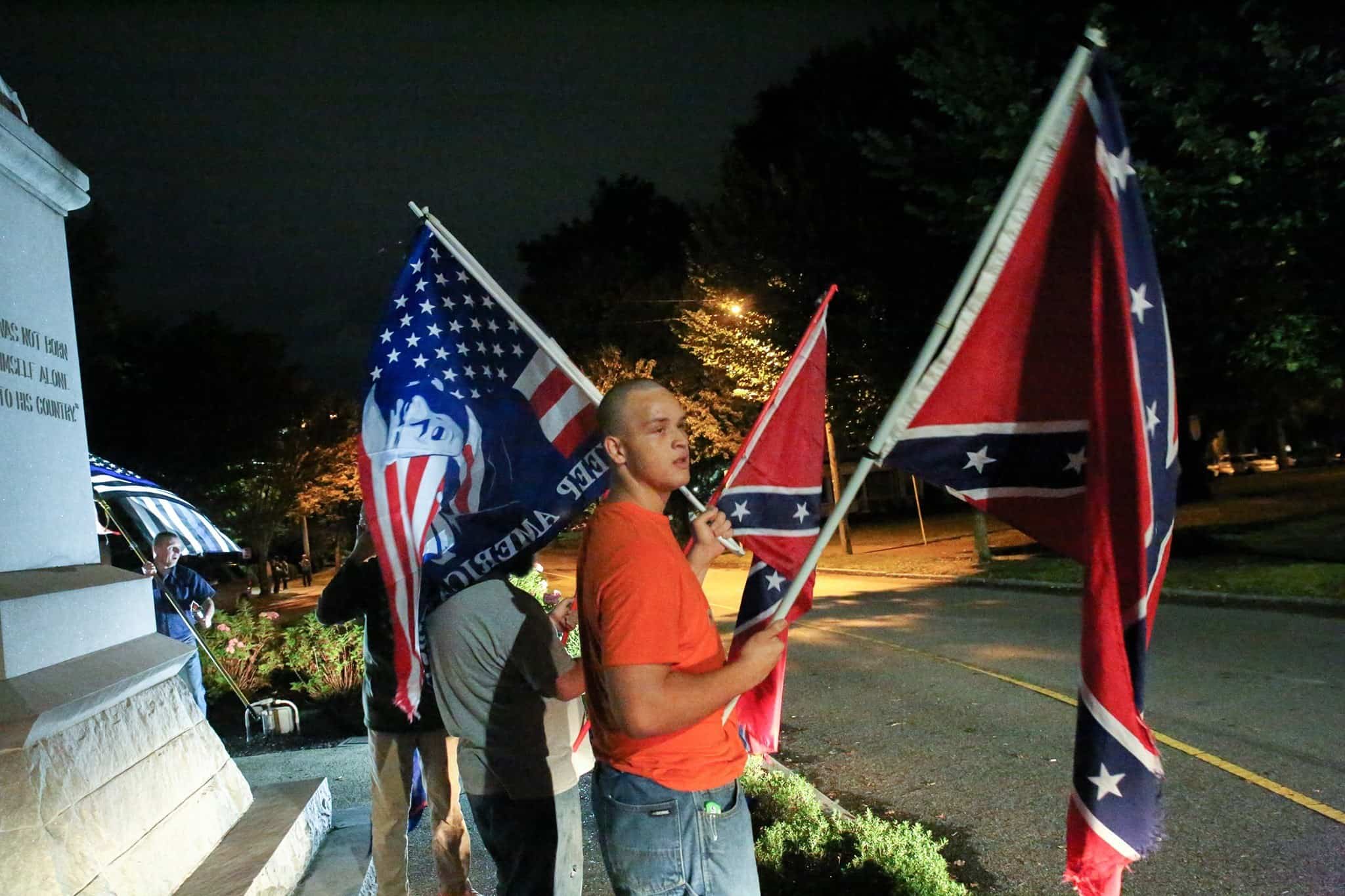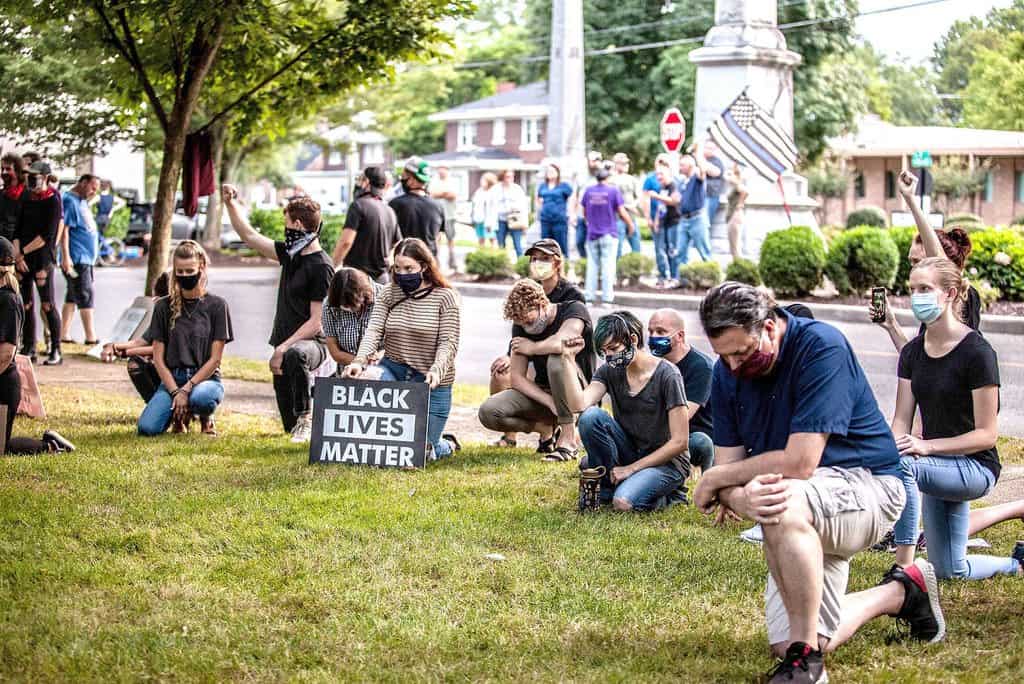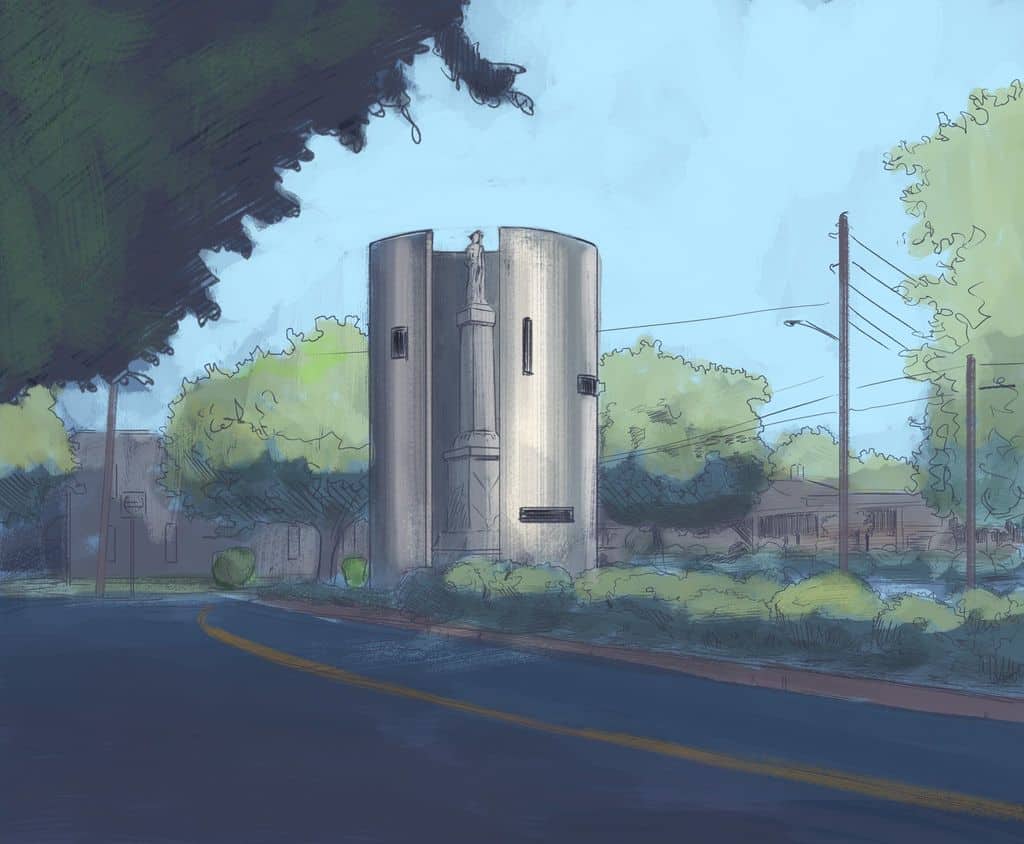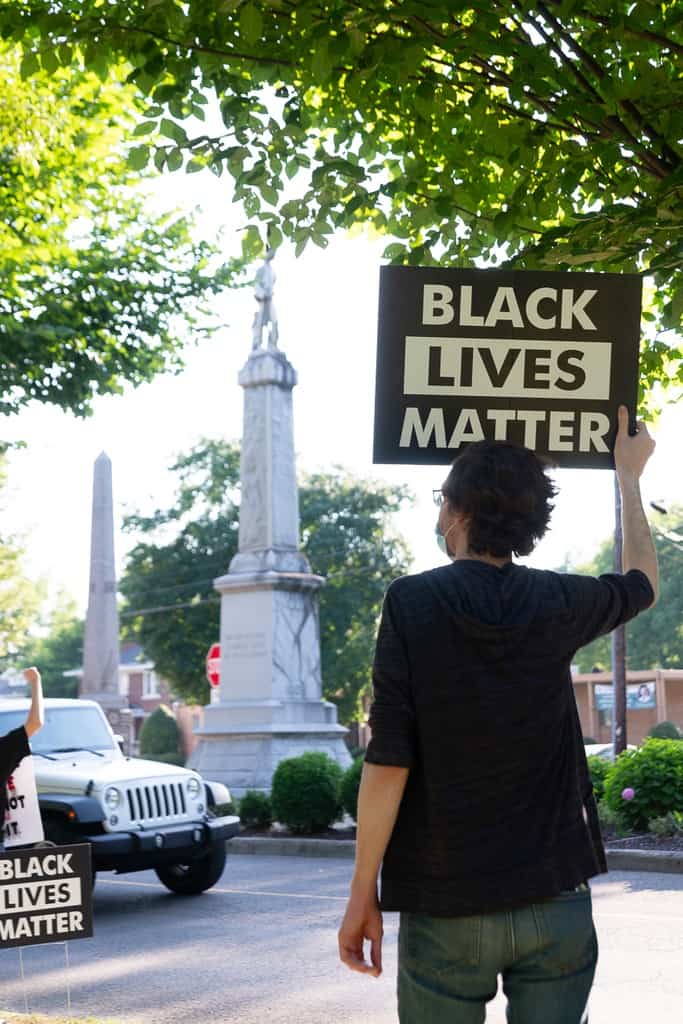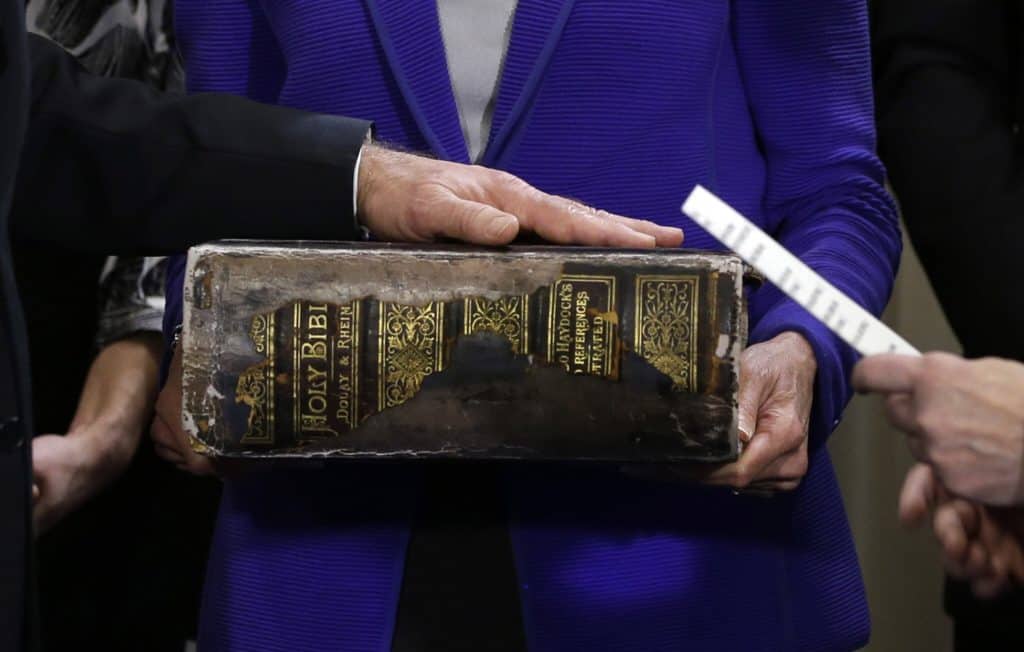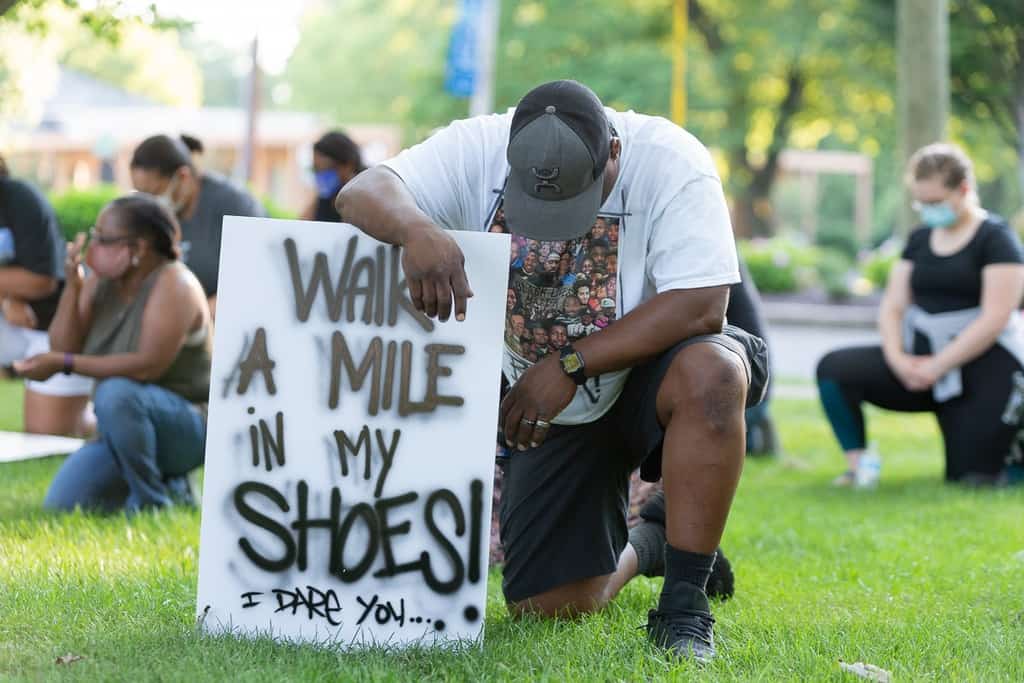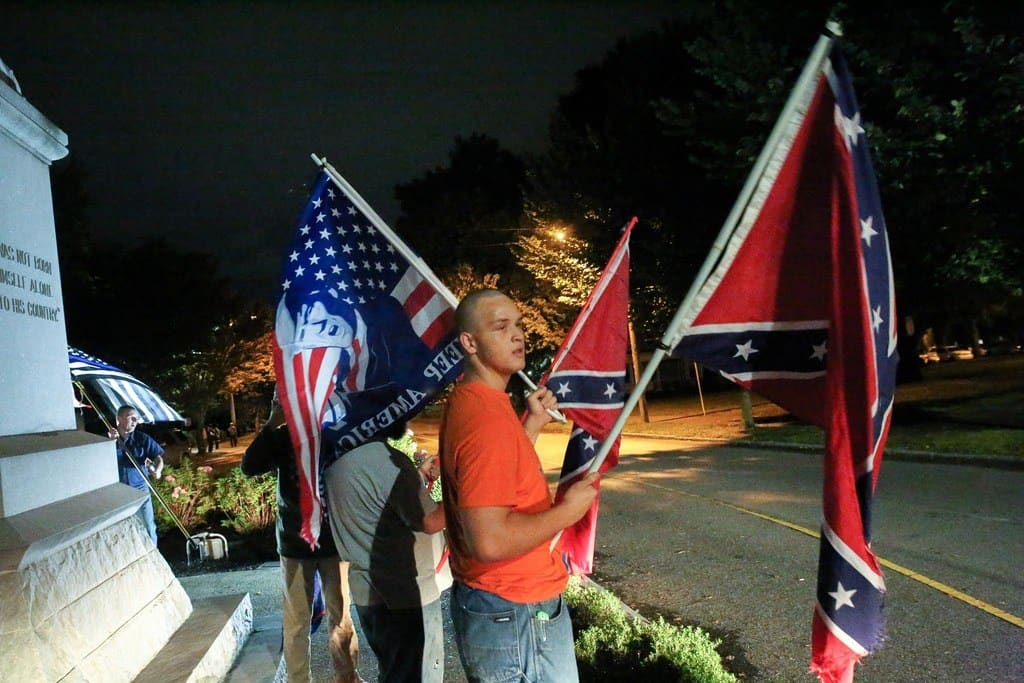
Faith on View has been covering this story since the demonstrations started in June. Our long article archiving the story is now over 16,000 words and can be read here.
Hope and Betrayal
The presentations to the City Council and the stories in the news eventually led to a call for a task force to look into the monument issue. On August 24th the City Council voted 4-3 to form such a task force. This was directly in response to a request from Emancipate Cleveland and a call from the editor of the Cleveland Banner to form a task force with representatives from all concerned parties including the United Daughters of the Confederacy, Emancipate Cleveland, the NAACP, and other concerned parties. The news was received as a victory by the leadership of Emancipate Cleveland. However, when the city formalized the Task Force on September 14th, they had changed it to a “Perseverance and Unity Education Study Group.” The city had decided not to even address the concerns about moving the monument. Despite the fact that some other southern cities have actively taken stands against Confederate monuments, even when they reside on private property. The City has taken the position that they do not have legal standing to even discuss what should happen to the monument. The Study Group will only look at setting up an off-site educational exhibition at either the historical library or the public library.
Not surprisingly, many who oppose the Confederate monument view this as a betrayal by the City Council. They promised and voted on a task force to look into the issue but delivered a study group that will not even address the issue. This result should not be surprising though. The city has claimed they cannot do anything. There are real legal questions about the positions taken by the city which will need to be answered.
What are the Legal Questions?
After proposing the anti-racist monument, I was invited to meet with city staff to discuss the monument. They allowed me to bring representation from the Black community and a lawyer. As a result of this meeting, I have a pretty clear understanding of the city’s positions and the questions that need to be answered. This is not a complete list but it gets at the main issues.
- Who owns the land on which the monument sits? Almost from the beginning of this issue the city has claimed they cannot do anything because the monument sits on private property. While that is not entirely true and there are avenues that can be taken even if the monument sits on private property, it is clear that there is no political will to tackle such issues. The entire argument that the land is owned by the UDC is based on the minutes from a City Council meeting on February 17th, 1911 in which is said the 12′ x 12′ plot of land on which the monument now sits “is hereby, sold, transferred and conveyed to the officers and members of the Jefferson Davis Chapter, United Daughters of Confederacy”. There is no deed for this piece of land. There is no evidence that after the sale of the land was authorized that it actually was sold. It is not even clear if the Jefferson Davis Chapter of the UDC was a legal entity at that point which could own land. It may be that the organization was, in fact, a legal entity that can own land and that Tennessee law would deem this sufficient proof of ownership even without proof of the sale being consummated. Likely that is a question the courts will have to answer.
- Who owns the land surrounding the monument? The monument sits on a triangular traffic island surrounded by three intersecting roads. The Tennessee Department of Transportation has stated to the local paper that they do not own the island. They only own one of the roads that is a state highway. However, the city online maps indicate that the state owns the island. They have done no research other than to look at the online county map. Based on this map, the city has decided that they can do nothing on this island, even though they have constructed sidewalks and planted plants on that island in the time period during which they claim the state-owned the land. We have a situation here where both the city and the state claim that the other party owns the land. Once again a court ruling will likely be needed here. Since the city is claiming that they do not own the land they are holding the position that they are not able to pursue either the Anti-Racist monument proposal or the Estes compromise, both of which are outlined above. It should also be noted that according to the city map the plot of land purportedly owned by the UDC is owned by the state. So clearly the map is not accurate even according to the city but they are unwilling to do additional research on the subject.
- How does the Tennessee Heritage Protection Act (THPA) apply to the monument? This act is a tough one. It is interesting that conservatives passed this law because it is big government telling small government what they can do with their own land which isn’t a very conservative position. Essentially, the law does not allow a local city or county to move or conceal a Confederate monument without getting explicit permission from the Tennessee Historical Commission. Further, if a city violates this law they cannot receive funding from the Tennessee Historical Commission for five years. I do not know how much Cleveland, TN receives from the Commission but understandably they don’t like the financial consequences of the law should they violate it. This applies if the monument sits on public land. The city is also taking the interesting position that the THPA would also prevent them from doing anything that could obstruct the view of the monument even if it is on private property because it is visible from public property. So essentially, the city is arguing that the THPA protects the monument whether it is on public or private property. This was their primary argument against the Anti-racist monument. They claimed they don’t own the land and even if they did they can’t conceal the monument. There is no clear legal definition of concealing in the law and it is clearly addressing situations other than what is proposed in the Anti-racist monument concept. I personally find their interpretation to be rather unlikely. But, at the very least, the Tennessee Historical Commission will have to weigh in on how they interpret the law and in this issue also a court decision may be needed in the end.
Ultimately, if anything is going to happen these questions will have to be answered. Until they are answered the City Council, despite having demonstrated their desire not to do anything, will be able to claim that their hands are tied. The reality is that the city does not want to do anything. Therefore, their objections will have to be handled before moving forward. Further, a coalition of support will have to be made. The city leaders transparently don’t want to take a stand when they can pass the buck. The movement to remove the monument will have to find answers to the objections that are allowing the Council to pass the buck and generate support from within the city to pressure the leaders to do the right thing. There are many churches, organizations, and businesses in this city that do not want to be seen as part of a racist southern town. Over the last 25 years, Cleveland has grown into what the city’s statement on the Perseverance & Unity Education Study Group calls a “very diverse multicultural and multinational community.” That diversity is incompatible with this monumental relic of the Jim Crow era.
A Transitioning Story
With the City’s decision to renege on the Task Force commitment, the organizers for the demonstrations have decided to move in a different direction. The September 25th demonstration at the monument was the last one for the immediate future. Emmanipate Cleveland has plans for other demonstrations and community work. A demonstration against the decision not to prosecute in the Breonna Taylor case is the first such demonstration planned. The local news covered the last monument demonstration. The demonstrators are not finished with the issue of the Confederate Monument. But, they also realize that without the will of the City Council to do right there are legal questions that need to be answered and the group needs time to redirect their efforts.
Fittingly, the final demonstration took place the same night as a “Trump Train”. The train dozens of cars and truck drove by the monument bearing their Trump flags, honking, and yelling. While most drove by circling for 20-30 minutes. Some stopped and joined the pro-monument protestors bringing their Trump and Confederate flags. Around 8:30 pm Emancipate Cleveland quietly packed up the demonstration, as they have for 15 weeks, and went home. We left to those standing under the monument bearing their flags signing, “nah nah nah nah hey hey hey goodbye.” It just seemed to encapsulate the contrast between the quiet pursuit of progress sought by the demonstrators and the provocation brought by those seeking to honor a heritage of hate and oppression.
https://www.facebook.com/hiawatha.brown.5/posts/10208144278320547

